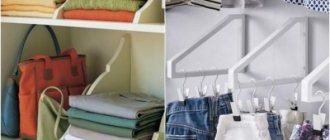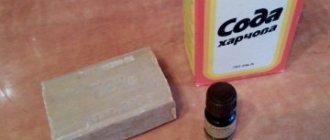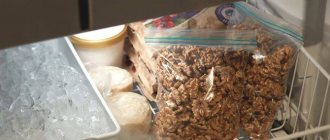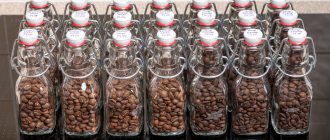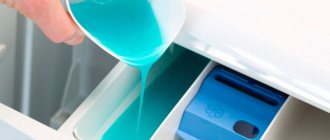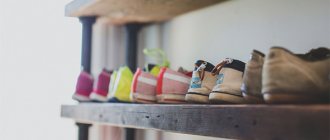Toys surround a child from the first days of his life. Parents constantly buy them and give them to relatives. As the baby grows up, rattles and rubber rings are replaced by cubes and pyramids, dolls and cars replace soft models. The collection of gifts is constantly growing, and if you do not organize a system for storing toys in time, you will have to collect them from all corners of the house or apartment.
There are many ways to properly arrange children's things. You can use drawers, racks, shelves, boxes, baskets. It is very important to teach your child order from an early age. This will not only save the mother from headaches, but will also help instill in the child such qualities as accuracy, neatness, attentiveness, and organization. After all, every parent wants to raise a neat and clean person.
Basic rules and tips for organizing storage
Cleaning up your baby's room is easy. The main thing is to do this systematically. First of all, you need to take into account the age of your son or daughter:
- Up to 2 years. Toys are given to small children by their mother. There are usually few of them, and one box is enough to accommodate them.
- From 2 to 5 years. During this period, the collection of toys becomes very large; one box is not enough. It is worth taking care of shelves, cabinets and drawers.
- From 5 to 10 years. A lot of things accumulate, their variety increases, and their arrangement will require sorting. However, as the child grows up, his interest in games gradually disappears.
When organizing a storage system, you should follow the following rules:
- Each toy should have a specific place. You should use your own example to teach your child to put things where they belong.
- The most favorite models, which the baby often plays with, should be placed at eye level.
- It is better not to store broken products that cannot be repaired; they are usually thrown away.
- Rattles, rubber rings, and other items that the child has outgrown can be given to friends or left for younger generations, out of sight.
- The storage location is usually chosen near the playing area.
- Items must be placed so that they can be seen, and the baby should be able to get the model he likes without any problems.
- As the child develops and learns to read, boxes and containers can be labeled and labeled.
- When the collection becomes very large and varied, all products need to be sorted. For small items, it is recommended to select small boxes and containers.
Particular attention should be paid to safety. All racks, hanging shelves, cabinets must be well secured. Furniture should be chosen without sharp corners, only paints that are harmless to health should be used for painting, and cleanliness should be maintained.
Sorting toys by activity
Systematization can be done in different ways. The simplest one is to reduce the number of items. The disadvantage of this approach is that when the child remembers some model, he will have to look for it among the collected things. A more rational approach is to sort all products into categories and arrange them correctly on shelves, racks and drawers. You can sort items as follows:
- We collect all the toys in one place.
- We throw away broken copies that cannot be repaired.
- We break down and organize things into categories:
- small;
- puzzles;
- outdoor (buckets, spatulas, molds, balls);
- game sets (Lego, construction sets, cubes);
- models for games (board, card);
- soft goods;
- large-sized.
- Placement on shelves, drawers:
- We place the most beloved and popular ones, which the baby can play with independently, at eye level so that he can easily reach them.
- We put small puzzles, construction sets, plasticine, which the child needs help to play with, into containers, small drawers, and put them higher so that he cannot reach them.
- We allocate a separate place for outdoor, soft, large items.
- Educational kits should be left in plain sight.
Labeling of storage locations
Regardless of the chosen storage method, be it a cabinet, shelves, walls, racks or boxes, you can separately consider a labeling system. For very young children who cannot read, color design is suitable. It will be easier for the child to remember the place where this or that object should lie. For example, you can use a blue container for soft toys, and a red one for cubes.
For marking, you can also use various labels, stickers with images of flowers, favorite cartoon characters, and other thematic pictures. This will greatly simplify the process of teaching your child to be tidy, and cleaning will turn into an exciting activity. Having memorized a certain drawing, the child will be able to find the necessary thing for the game without much effort.
Older children who have learned to read and write can be asked to label shelves and drawers themselves, draw letters using a stencil, decorate them, and make appliqué.
Six principles for storing children's wealth
In fact, cleaning up the nursery is not a difficult task. It is only important to develop the correct cleaning algorithm. But it’s worth starting by defining the basic principles of organizing toys in the nursery.
Order from the first days
The birth of a baby gives happy parents joyful troubles associated with the choice of blouses, onesies, hats, as well as a crib, changing table, etc. The list can be continued indefinitely, but there will still be no place in it for an organizer for toys: why, after all, the baby still very small. This is a big miscalculation of parents: already at 2-3 months the baby will have the first rattles, squeakers, rattles, which need to be stored somewhere. And here you can’t do without open plastic baskets: you can always see what’s inside and it’s easy to carry. A small number of toys for now allows you to not think about lids for containers - they don’t have time to gather dust.
In the first months, the containers can be open, then there are a lot of toys and, so that they do not gather dust, the storage facilities must be closed
Thinking through furniture
When decorating a room or a corner in a baby’s room, you should immediately design options for storing children’s wealth. These could be drawers under the bed, baskets or containers under the table. From personal experience, I can say that you definitely need to allocate space in a bookcase or on an open shelving for storing books and stationery. I missed this moment at one time and paid with the fact that the books were on the bed, and on the floor, and in other rooms, which is why they were very tattered.
Furniture needs to be thought out in advance so that it doesn’t turn out that there is no place for toys
Let's systematize
Perhaps this is the most difficult task, since there may be several approaches to systematization. First: remove everything that the baby does not play with now, leaving only relevant toys. The advantage is that there will be few toys left, and their presence in the room will not cause much discomfort. In addition, the baby will not be constantly in search of what he needs now, but is lost in a pile of less favorite toys at the moment. Cons: Children’s priorities change very often, sometimes several times a day, so you will have to go to the “main storage” every now and then and get what the baby asks for. By the way, it would also be nice to put things in order in this very main storage room. Another significant drawback of such systematization is that small and large toys, puzzles, construction sets need sorting, so ordering according to a more precise principle than relevance is indispensable.
The most rational approach to systematization is to distribute toys into categories:
- Stuffed Toys;
- designers;
- cubes;
- puzzles (can be combined with board games);
- sets for creativity (albums, paints, pencils, coloring books, etc.);
- dolls;
- cars;
- sports equipment (balls, jump ropes);
- toys on the controls (it would be nice to have some space nearby for spare batteries);
- weapons (can be combined with soldiers);
- small toys (such as in Kinder Surprise);
- musical toys (musical instruments, organs, singing boxes, etc.).
The baby should know where each toy lives.
We ensure ergonomics
In other words, it should be convenient for the baby to take out and put away toys. Therefore, storage locations should be at the height of the child. The only exceptions are those options that your child either has not yet grown up to, or from which he has already grown (and you would be sorry to give it all away or throw it away).
Children should have access to all their toys
We use space rationally
Kids react with great enthusiasm to the addition of toy luggage, but parting with toys is very difficult. This leads to the fact that by the age of 7–9, children turn into Gogol’s Box, which collects everything but does not throw anything away. Therefore, it is very important to use all (!) possible and impossible places to store toys.
This is interesting. A large toy bag is the second least efficient storage option (the first is to simply distribute all the toys in the corners of the room). So: in a big bag, toys will not stay long - every time, puzzled by the search for something important, little Sherlock Holmes will take out all the contents. In any case, the result will be the same: the toys will end up on the floor again.
A rational approach to the content of gaming activities involves choosing a convenient storage
We care about safety
As already noted, storage areas for toys that the baby is currently playing with must be accessible and safe for him. That is, the drawers move smoothly, the cabinet doors close tightly, and the hanging pockets are firmly attached to the wall. Safety is important with toys too. They should be:
- without sharp corners and small parts;
- painted with paints that are safe for health;
- clean (for example, soft toys that should be given to a child no earlier than 2–3 years old must be washed regularly and dried thoroughly to prevent mold from appearing in the wool).
Toys must be safe for children
Original and unusual ideas for storing toys
You can organize your toy storage system in different ways. For these purposes, select a separate corner in the nursery, use the wall, the space under or above the bed. If you place your existing things correctly, then even in a small room there will be enough free space. For clarity, let's look at several original ideas for the arrangement of various items for games.
Spacious shelving with open shelves
A rack can be an excellent alternative for storing toys. It takes up little space while saving space. You can place it along the wall or in a corner. Its main advantage is the presence of open shelves, which provides quick access to the things located on them. For children's rooms, it is necessary to choose models with rounded corners, and during installation, special attention is paid to the reliability of fastening.
If there are few toys, then each of them can be placed on a separate shelf. It is better to place a large volume in boxes, baskets, containers, and fill the shelves with them. In the central part, located at eye level, it is recommended to place the most favorite products, on top - rarely used ones, as well as structures consisting of small elements. A separate place can be allocated for your favorite books.
Options for shelving designed in the shape of a house look very interesting. Any father can make the design with his own hands. Any girl will like it and can place her dolls on shelves. It is also suitable for boys. Having imagined that each separate section is a garage, they will be happy to return their cars to their place after the game.
Bright and stylish baskets
Beautiful baskets in which kids will put their toys can be purchased in an online store or made yourself. To organize storage you will need several baskets. It is desirable that they be of different sizes and colors. This will help sort toys into categories and teach children order. It will be much easier for them to navigate their collection; they will be able to quickly find the item they need.
All baskets differ from each other in material and manufacturing method. There are fabric, wicker, and plastic options. When choosing the last of these types, special attention should be paid to the quality of the plastic. It shouldn't smell. If it has a smell, it means that harmful plasticizers were used in its production; it is better to discard such products immediately.
You can place baskets in a variety of places. Fabric models can be hung on the wall or installed on the floor, allocating a separate corner for them. Wicker and plastic options are best placed on shelves, placed on a closet, or hidden under the bed. Needlewomen will be able to save on purchasing ready-made products, sew stylish and original designs with their own hands, and make interesting decor.
Wall pockets
Pockets are made from different materials. For work, you can use polyethylene, cardboard, plastic, but fabric options are most common. There are many different types of organizers that differ in shape, color, and decorative design. While the child is small and has not learned to walk, the product can be hung on the walls of the crib, and rattles, diapers, and napkins can be placed in it.
The main advantage of wall pockets is that you can sew them yourself without any problems. They are used not only for storage, but also as an independent toy, educational aid, for example, they sew pockets with letters of the alphabet or numbers on the canvas. The main disadvantage of the design is that bulky toys cannot be placed.
Cuciner bags for toys
Bright bags can be of any shape and size. They are convenient for storing small and medium-sized toys. Thanks to the dense walls and special frame, they are easy to fold and take out. When folded, cuciner bags do not take up much space.
A bag is the safest option for storing small items. It is made from natural fabrics, without the use of harmful dyes. Models can be open or with a Velcro lid. The device is almost impossible to damage. A bag filled with soft toys can be used as a comfortable chair. It is easy to clean and wash.
Variety of boxes
The child will always participate in the process of cleaning up toys if he is properly engaged. Any kid will definitely be interested in colorful storage boxes. They can be made from various materials and have bizarre shapes.
When choosing an option, you need to understand that the child is not interested in a complex shape and unnecessary decor. The simpler the toy device, the better. Child psychologists recommend keeping play items within the child's sight and reach. Plastic transparent containers and mesh boxes are suitable for storage. When purchasing or making your own toy box, consider the following factors:
- Form. The usual option is a cubic, cylindrical solution. Can be supplemented with legs or wheels;
- Size. The dimensions of the box must be selected according to the child’s age, taking into account physical development and growth;
- Color. Bright, but not irritating shades are suitable, for example, green, orange, blue, pink. It is better not to paint toy boxes red, black, or gray;
- Availability of decor. The sides and lid can be decorated with funny pictures and embroidery. These can be cartoon characters, cars, transformers, animals.
Armchairs, poufs and a bench with a hiding place
Multifunctional storage items can be used for their intended purpose and as a hiding place for toys. The opening system can be anything. The top cover of ottomans and benches is removed; the lower part of such a chair is often equipped with a drawer and wheels.
There are many models with different designs. Upholstered furniture for a nursery with storage space for small items can be made of wood or cardboard. The second option is designed for light weight, so it can be used up to a certain age.
Closed storage facilities have significant advantages over other options. Multifunctional benches and armchairs can replace monotonous chairs and are arranged compactly. With their help you can successfully unload space.
Storage options
There are many options for storing toys in a nursery; it is only important to choose them according to the color scheme of the room, the style of the room and its area.
Furniture and accessories for storing toys in a children's room
Storage rack
Net for storing toys in the bathroom
By the way, it is fashionable to organize a storage system for things in the bathroom, because often a child takes toys with him when going for a swim. Here you can use shelves from IKEA.
How to make your own storage spaces
It is very important to teach a child order from an early age. In order for the baby to quickly learn and understand the need for cleaning, you need to use a creative approach. In a playful way, you need to interest the child and smoothly lead him to folding toys independently. There are many master classes that help you create original storage spaces with your own hands from simple materials.
Wooden toy boxes
A box made of plywood or chipboard is the most durable and safest structure for storing children's toys. The model can be absolutely any. For kids they make a bench with a hiding place, a chest of drawers with pull-out compartments. Each of the options can be made either from new materials or from collapsible parts of old furniture. The work is as follows:
- We create a drawing of the box taking into account the dimensions, weight, type of support, and other important factors;
- We prepare materials (plywood, bars for legs, screws, hinges for the lid, glue, cutting tools);
- We cut out the bottom, side walls, and lid according to the dimensions;
- We connect the parts with glue and self-tapping screws;
- We clean the sharp corners with sandpaper, paint or paste over with colored paper;
- If necessary, we decorate it further (add wheels, an interesting roof, etc.). A toy box can be given the appearance of a house or a car.
Master class on sewing fabric baskets
In a small nursery there is not always room for a massive drawer. It may also look bad against the background of the overall design of the room. In this case, it will be more convenient to use a textile basket for order. This is a great option for storing soft, wrinkle-resistant toys. This bag can be placed under the table, hidden in the bottom compartment of the bed, or hung on a hook near the wall. To make it easy for a child to put in and take out his favorite toys, the bag is equipped with rings.
The main advantage of a textile bag is mobility. It can be freely carried not only within a house or apartment, but also transported to the country, taken on a picnic or for a walk. To sew a simple basket you will need 1 meter of dense fabric and a cord for ties. Cut a piece of the required size, fold it in half and sew it on both sides. From the edge of the remaining side we form a place for the lace. We stretch the rope and make knots at the ends so that it does not slip inside when the bag is suddenly opened.
Cardboard boxes
To make a toy box, you can use any available material. An excellent option is cardboard. Pliable paper in the hands of creative parents will turn into an interesting toy box. The child must participate in the process of creating the storage. You can entrust him with the responsibility for choosing the color, allow him to coat the edges with glue or cut out small parts of the structure. With this approach, he will learn how to use a new thing and maintain order in the room much faster. Step-by-step production looks like this:
- Select a suitable cardboard box and cut off the top moving sheets;
- We make holes on the sides for ease of movement;
- We cover the box with colored paper;
- We cut out places for handles and decorate as desired.
We sew pockets from old clothes
Children often forget about once-loved toys as new hobbies appear. In a room full of dolls, cars, and construction sets, there may be nothing to play with. Interesting pockets can help your child organize his or her leisure time. They are easy to sew from old clothes.
A children's organizer will help not only sort small items, highlight useful books and educational materials, but also successfully optimize the space. Textile wall pockets will perfectly complement any interior. There are a lot of ideas for sewing useful accessories for a children's room. The following master class with tips will help you organize interesting storage systems from old jeans or shirts. The work is as follows:
- Cut out a suitable piece of shirt or trousers for the base. This could be a back, sewn trouser legs;
- We fold the material like an accordion and stitch it on the sides and in the center;
- We cut off the pockets from the original clothes and sew them on in random order;
- In the upper part of the sleeves we make handles in any way and hang them on the wall or the back of a chair.
Shelves made of plastic buckets
You can make an original multi-tiered rack from ordinary household buckets. The features of the main construction material allow it to be used not only at home. Such shelves can be installed on the veranda, garage, garden, or playground.
A rack of plastic buckets can be given any shape. It is important to ensure that the structure always remains stable and that the upper tiers are securely fixed. You can make an original storage facility with your own hands according to the following plan:
- We choose plastic buckets. They can be the same or different colors and sizes;
- Just below the rim we make several holes with a hot nail;
- We connect the buckets with a special clamp or wire.
Hanging storage systems
Hanging baskets look beautiful and unusual in a children's room. They can be made of textiles, plastic, metal mesh and other safe materials. The main advantage of such a storage system is the ability to place it in places that are inaccessible to other structures. They can be hung on the wall or attached to the ceiling. The last option is quite difficult to implement in a children's or one-room apartment; you will need to use a hammer drill.
First of all, you need to choose suitable containers. It is better if they are transparent or mesh for a good view of the contents. We choose a location in the playing area and make a mark on the ceiling. At this point you will need to drill a hole and install a spacer hook. He will be responsible for the reliability of fastening of the entire structure. Now we install the lifting mechanism and secure one or more baskets.
DIY toy boxes
Looking at the not childish prices for cute wicker or plastic baskets in stores, you think that the idea of making colored toy boxes with your own hands is not so bad. You will need cardboard boxes made of thick (not corrugated) cardboard, most likely from household appliances. You can try your luck with your friends: many manufacturers provide warranty repairs only if the packaging is present. So people keep the boxes. The warranty period has long passed, and they forgot to throw away the packaging. These boxes are the best option for children.
Another option is to ask in department stores. They also often receive goods in hard packaging. For example, diapers, wipes, etc. come in these.
Cover with paper
Cut off the lid from the found boxes. We cut holes-handles in the side walls (narrow). We seal all joints from the inside with tape.
Cut off the lid of the box and make holes in the sides for handles
Take colorful paper. The wrapping paper used to wrap gifts is perfect. It is dense, there are a large number of different patterns. You can also use scrapbooking paper. If the trim is made of paper of different colors, we cut it into strips of equal width; if we paste it with one pattern, we measure the strip along the height of the box.
Glue the paper
We take glue (PVA), brush the surface of the box and start gluing it from the corner. We try to glue without bubbles, smoothing the paper gradually, from edge to edge. We place the next sheet with a slight overhang, not the previous one. Continue this way until we have covered all the surfaces.
We design handles
After looking at the light, we cut out the handles with scissors. To make the edge more neat, glue the sections of the handle with a thin strip of paper. We also decorate the top cut with a stripe.
Ready-made homemade toy box
We cover it with fabric
In this case, all corners of the box can be taped on both sides - it will last longer. Next, take the fabric and cut out two sets of blanks to fit the box. One is strictly in size, plus a seam allowance, the second is 1 cm smaller and also with an allowance. Add 0.5-1 cm to the seams on each side. You can cut the workpiece immediately in the form of a cross, but this way the fabric consumption is greater - it is more economical in separate pieces))
We cut out a double set of blanks from the fabric and sew them together
We first sew the parts together in the form of a cross, then make a bag from the blank. Let's try it on the box. We stretch one (the larger one) from the outside, and straighten the second one from the inside.
Fitting
Now we take universal glue and glue the fabric around the perimeter of the bottom, inside and out. Then we glue it in the corners. This way the fabric will not move.
Glue the fabric along the edges of the box
We fold the edges of both bags inward and trim the box around the perimeter by hand.
We trim the top of the toy box, cut out the handles
Using scissors, cut through the handles. Just don't cut out large pieces. You need to leave about 1 cm of “extra” fabric. We wrap it inside, hemming the handle.
Hemmed handle
Having decorated the handles, we get a ready-made box for storing toys.
The box is ready
Decorated with self-adhesive film
Rules for storing soft plush toys
The need for proper storage of soft toys becomes obvious when their number reaches impressive volumes. Children often become attached to plush items, which leads to hoarding and constant clutter. The following tips will help you organize your storage wisely:
- For large toys, you can install a separate rack that fits tightly to the wall, or equip a special place in the dressing room.
- Textile animals and dolls should be placed in tall, narrow-shaped baskets. With the help of such devices, things are sorted. Frequently used ones remain on the easily accessible level, the rest are removed to the upper tiers;
- Plastic or wooden chests with toys can be used as a chair or nightstand if placed near the bed;
- Soft trinkets can be collected in a hammock attached to the corner of the room;
- Toys with ribbons, ropes, suction cups for fastening should be stored on hooks in a suspended state, or can be hung on the door;
- It is better to pack things that the child is not interested in in a sealed bag and remove them from the room.
Main points
The process of establishing and maintaining order in a home with children is greatly simplified if parents competently and rationally approach the issue of organizing a capacious storage system for children's supplies.
It is important to take into account the convenience for the baby himself, so that he can independently get the things he needs and put them back in place after playing.
Manufacturers offer ready-made pieces of furniture for storing things, books and toys. When limited apartment space does not allow for standard furniture, parents can organize storage systems with their own hands, using boxes, bags, organizers and other improvised items.

